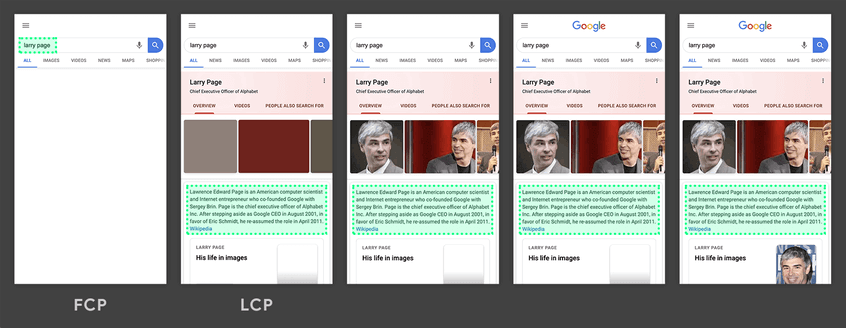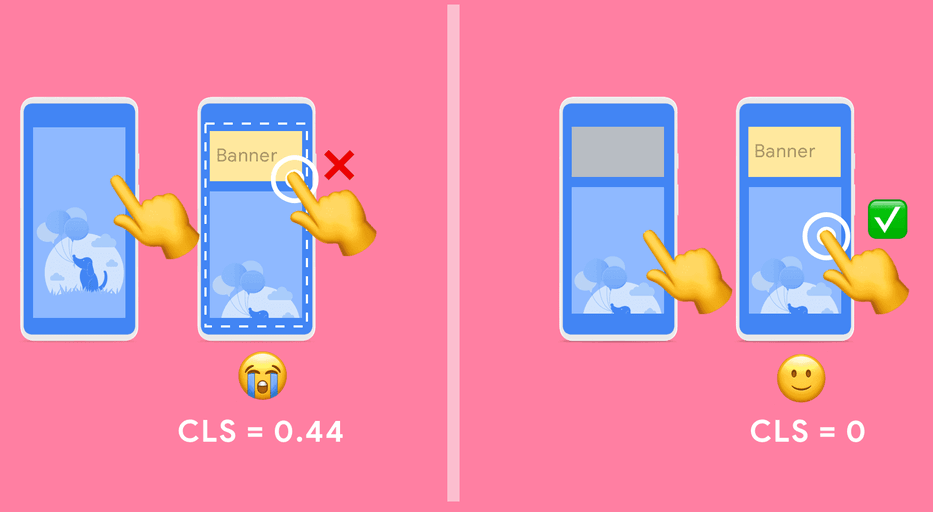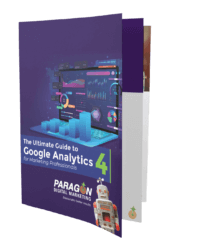
You’ve probably realized by now that SEO (search engine optimization) is an important component of your marketing strategy and should be prioritized.
It’s not a “set and forget” activity because search engines and their algorithms are constantly changing. SEO in 2021 is not what it was back in 2013. In fact, if you’re still using old strategies to gain SEO benefits, there’s a chance those practices may be obsolete or even harmful now.
So how do marketers know what to focus on to gain the best results? What does SEO look like in 2021 and how can marketers ensure the sites they’re responsible for are best optimized?
Here’s our guide to SEO this year (and if you need a quick SEO primer as well, check out our article here):
Focusing on page experience
While on page experience and its effects on ranking isn’t new, how Google measures this will change in a big way. Google has announced that page experience signals will be included in rankings as of May 2021.
Google shared, “these signals measure how users perceive the experience of interacting with a web page and contribute to our ongoing work to ensure people get the most helpful and enjoyable experiences from the web.”
These signals are collectively known by Google as “Core Web Vitals” and if you haven’t checked your site, now is the time to review it and address any issues. Those core web vitals consist of three key measures: Largest Contentful Paint (LCP), First Input Delay (FID) and Cumulative Layout Shift (CLS). Here’s what those mean:
Largest Contentful Paint (LCP)
LCP is a measurement of how long it takes the main content of a webpage to download and be ready. The “main content” is considered to be the largest block of text or image within the user’s view – aka “above the fold”.

Google uses LCP because it’s considered an accurate measure of how quickly the webpage is usable. For those familiar with basic HTML, any block-level HTML element (main, section, heading, div) can be considered the main content, as long as it’s the largest one.
How can you improve LCP? Here are a few strategies to ensure your main content renders as fast as possible:
- Correct any slow-loading servers (this can happen for a variety of reasons, so it’s important to get to the bottom of why a server is responding slowly).
- Use tools that help to reduce load time, such as caching and CDNs (content delivery network).
- Ensure any third-party connections are signaled to load early (use rel= “preconnect”).
- Make sure image files are sized as small as possible without sacrificing clarity.
- Compress text files.
(Note: There are a handful of other potential strategies as well. This WebDev article has some good suggestions.)
First input delay (FID)
FID measures the time from when a person first interacts with your site (such as clicking on a button), to the time the browser is able to respond to that interaction. Obviously, the goal is that the time is as short as possible. It is measured in milliseconds because in the world of website interactions, milliseconds matter! Studies have found that 0.1 seconds is about the limit for people to feel that their request has been acted on instantaneously.
The FID thresholds measured in your Pagespeed Insights are:
- 100ms or less = good
- Between 100-300ms = needs improvement
- Above 300ms = poor
Common reasons for poor FID scores can be due to JavaScript and/or CSS not being optimized. For example, long tasks may need to be broken up into smaller, asynchronous tasks.
Cumulative Layout Shift (CLS)
CLS measures all layout shifts that aren’t caused by user interaction. Or, put another way, it measures how often users experience unexpected layout shifts, which impacts their overall experience.

You’ve probably experienced this yourself – like when you’re trying to read an interesting article and something happens in the background. Suddenly the page shifts and you lose your place – it’s a frustrating experience!
CLS is about unexpected layout shifts, like when your article reading experience is messed up. Strategies to avoid a high CLS score include:
- Avoiding inserting content above existing content (unless it is in response to a user action)
- Always using size attributes for images and videos or otherwise use CSS aspect ratio boxes to reserve the space.
Google passage ranking
Late last year, Google announced “passages” as a new ranking tool. Basically, passages are sections of a web page that may be ranked independently. These may rank much better than the webpage as a whole, and Google has estimated that this technology will improve 7% of searches globally. Below is a screenshot from their article, demonstrating what passages look like in search:
The key to passages is that the section chosen is highly relevant to the search query. It doesn’t mean that the whole page doesn’t matter – Google makes it clear that they’re still indexing pages and considering information from the entire page for that indexing.
If you’ve looked into page ranking factors previously, “old factors” still apply, such as backlinks, user experience signals and on-page SEO (keywords etc.). The difference now is that a well organized, optimized page has more chances to rank with passages.
What can you do? Content creation remains an important SEO tool. You can potentially help your chances of passage ranking by making sure your content is well-organized, such as with clear sections covering sub-topics. Some SEO experts are predicting that long-form content will be even more important in terms of passage ranking. (And bonus: a high-quality piece of long-form content could have multiple passages ranking).
In today's world SEO is more than just driving traffic to websites Share on XMore than just “driving traffic”
The origins of SEO are all about driving traffic to websites – today it is so much more. For anyone in sales or marketing, a key goal should be to demonstrate ROI from search traffic. This is something that has been discussed in the C-suite for years, and tools with improved attribution are now allowing marketers to better measure SEO impact.
Discussion among multiple SEO experts shares that behavioral analytics data will be your most important companion to “traditional” analytics measures of traffic, and where the traffic has come from.
While keywords remain important in terms of optimizing your website for search engines, in terms of real results, they’re taking more of a back seat. Key questions to be answered include what the customer is doing, how they’re doing it, and how a company can increase interactions with their search audience.
Part of this has been driven by the COVID-19 pandemic and the growth of online work and purchasing. The world has been in flux, as have results from keyword research. As part of this, strong online customer and self-support services should be a priority, including optimizing those for common searches.
User and search intent
Search intent is nothing new in the world of SEO. It refers to the main goal of the user when they’re typing (or speaking) a phrase into search. Common types of search include informational, commercial, and transactional.
In a nutshell, content that doesn’t match user intent won’t rank well. What has changed is that Google has got even better at matching up content with search intent, so that creating “perfect match” content is even more important.
You may already have a list of keywords that you know people commonly use when searching for your business, but do you know the true intent behind the keyword? The better your content can be a match for user intent, the better it will rank.
Going back to the types of search – informational, transactional, and so on, how will you know what the true intent is behind the keyword? One clue is to check to see what content Google is ranking for that keyword and the intent of that content.
For example, a search for “keto diet” finds that the top-ranked organic results are informational. So most people searching that term want to know details about the ketogenic diet and what it entails. They’re not usually looking to buy a plan at this stage. You can see more clues in the “people also ask” section that can help you with your own content planning.
You should absolutely create new content to optimize for search intent, but don’t forget about your old content either! It’s a good practice to revisit your older content and re-optimize it for search intent. You’ve probably got some great information there that is still worth sharing.
Content and featured snippets
Featured snippets are the short snippets of text at the top of Google search results that aim to quickly answer the searcher’s query. You’ll commonly see steps, lists, definitions, and tables at the top as snippets. “How to” searches will often come up with a featured snippet:
You can immediately see the advantage of being able to rank for featured snippets – it’s the first and most obvious thing on the page, and therefore, searchers are more likely to click on it.
The main question on every marketer’s mind here is, how can my content appear in the featured snippet? Here are our tips:
- Understand that most “featured snippets” come from pages that are already ranked on the first page for the search term. This gives you a place to start…
- Which keywords do you already rank for? You can use one of the keyword tools available (such as Moz or Ahrefs) to find your organic keywords and run a check on them.
- Optimize for featured snippets. SEMRush research found that most snippets are 40-60 word blocks of content. An idea to make your content “snippet worthy” is to create small sections of 40-60 words that answer a key question. For example, a question like “what is keto?” could warrant a quick definition in 40-60 words (you could get into deeper content in another section).
- Focus on paragraph snippets first. SEMRush’s data found that 70% of featured snippets were paragraphs.
- If you want to target list snippets, try using H2 or H3 headings for every item on your list.
Optimizing for voice search
If voice search isn’t yet on your radar, it needs to be. The last couple of years have seen huge growth in the voice space, with homes outfitted with voice technology and people often using the voice search on their phones. There is data suggesting around 50% of all searches are being done by voice, including 20% of mobile phone searches.
As technology has improved, voice search has become more reliable for users and, given its convenience, more people are starting a search with “okay Google,” “hey Siri” or “Alexa …” It means that voice search optimization has moved from the realm of “nice to have” to “you should probably do something about this now.”
So how do you optimize for voice search? There are two important concepts: context and conversational language. Context is the same for other types of SEO – understanding where the searcher is coming from. For example, if you are talking about “football” it has meaning for different sports in different countries. Other associated words add context, such as touchdown, try, goal, or “Aussie Rules.”
Conversational language refers to how people naturally talk. When you type a search query, you probably keep it as short and sweet as possible: “vegan pizza in South Lake Tahoe.” When you’re talking to a smart device, you might speak more naturally: “hey Siri, where can I find vegan pizza in South Lake Tahoe? Conversational keywords are important for voice search ranking.
Another strategy is to build FAQ content. A lot of voice search queries start with who, what, where, when, why or how. If you can create a base of FAQs that mirror those questions, it will help in voice search.
EATing domain authority
You may be familiar with domain authority, which was meant to rank the quality and reliability of websites. It used to be all about getting backlinks, but that has changed.
Now, Google evaluates your site based on EAT – Expertise, Authoritativeness, and Trustworthiness. Google’s guidelines define them as:
- The expertise of the creator of the MC.
- The authoritativeness of the creator of the MC, the MC itself, and the website.
- The trustworthiness of the creator of the MC, the MC itself, and the website.
Note: “MC” means main content.
Under Section 3.2 in the guideline link above, Google provides clear ideas of what EAT means. For example, high EAT content should have been created by people who are considered to be experts and/or qualified in that field. Medical advice written by a qualified doctor should rank more highly for EAT than medical advice written by an unqualified blogger.
Then there’s this:
- “Some topics require less formal expertise. Many people write extremely detailed, helpful reviews of products or restaurants. Many people share tips and life experiences on forums, blogs, etc. These ordinary people may be considered experts in topics where they have life experience. If it seems as if the person creating the content has the type and amount of life experience to make him or her an “expert” on the topic, we will value this “everyday expertise” and not penalize the person/webpage/website for not having “formal” education or training in the field.”
While EAT has essentially been around for years, Google has more clearly stated the aim to rank content from “reliable sources.” What can you do?
- Make sure your content is of high quality and written by people who can be considered experts.
- Be mentioned, cited, or published in more than one place. If others agree you’re an expert, that sends good signals to Google.
The role of video
Have you noticed that videos are often near the top of search results lately? That is no accident. Cisco data estimates that by 2022, online videos will make up 82% of all consumer internet traffic. Google has also confirmed that video can rank for featured snippets too.
This means that if video is a component of your marketing plan, it’s important to include video optimization as part of your strategy. Optimize your title, description, and tags with appropriate keywords and phrases. You could also choose to upload a video transcript to ensure that Google clearly understands the topic of your video and the context.
Additional tips:
- Embed video content onto your web pages or blog posts.
- Grow your audience on any video platforms you use (including Facebook and other social channels).
- Make sure your descriptions on any of those channels are optimized with keywords.
You’ll often notice that even if there isn’t a video snippet as a top result, video results will rank highly, especially for how-tos…
Relaunch your top content
This is an excellent suggestion from Moz that has paid off for a number of websites. We mentioned re-optimizing your old content earlier in this piece, but relaunching it, as well, can create a win-win.
From your perspective, you don’t have to reinvent the wheel. Review your analytics and find your top content over the last few years, give it an update, and relaunch it through your typical new content channels. Promote it on social media and in your newsletter – put it on the front page of your blog. This helps to ensure it gets more eyeballs on it and can keep performing for you in terms of SEO.
From your audience’s perspective, it’s a win because they know they’re looking at up-to-date information. It doesn’t matter how long ago it was first written, as long as it is accurate for today.
As Cyrus from Moz suggests, it’s helpful to perform a content relaunch audit. This can help you to weed out old content you don’t want published anymore.
Final thoughts
Google continues to push the envelope in order to deliver the most relevant and useful results to searchers. To accomplish this, they have expanded what they consider the benchmarks of high quality to include not only on-page content and inbound links, but also how well a site functions and how quickly it loads, especially in mobile. Google has also decided to attempt to directly answer many user queries with passages, snippets, and other direct answers embedded within search results links back to sites.
Above all, the goals of SEO remain aligned with Google’s goal: creating a great experience for users. If you’re writing for their interests and needs, and creating a great website experience, it will help keep them engaged, clicking, sharing and returning, which ultimately reflects well with Google and improves rankings for all good content.
One thing remains true after years of work in SEO: keeping up with changes from Google can be a full-time task. There are many resources available that can keep your SEO tactics current, or you can contact us to help ensure you’re not left behind with the next Google update.
Ready to get started?
Contact us today using the form below and a member of our team will be in touch with you shortly.


